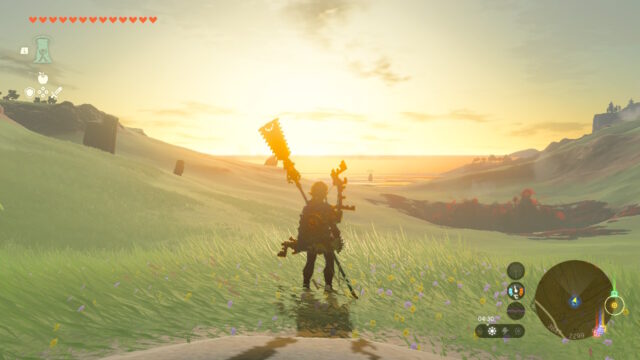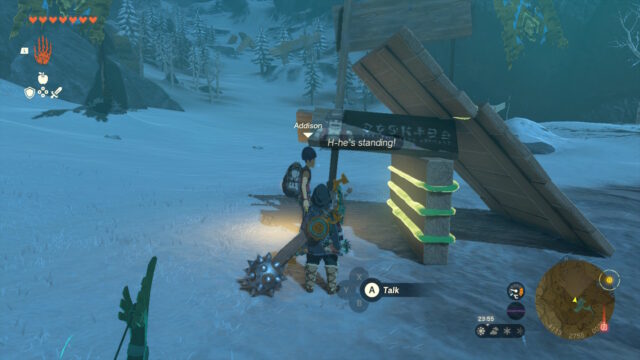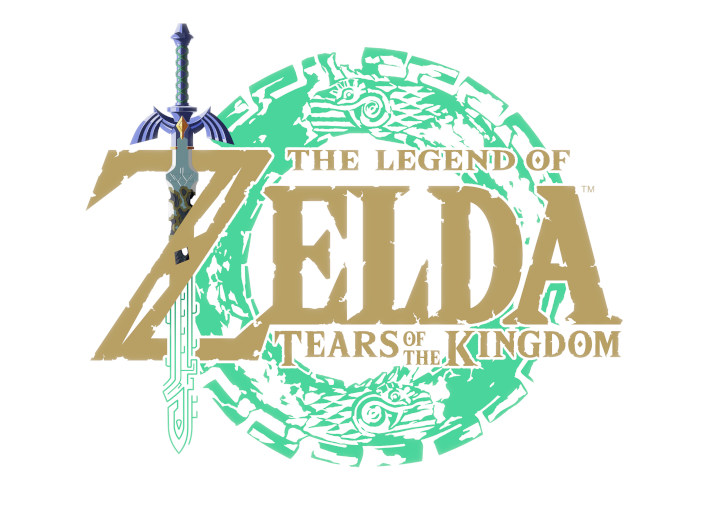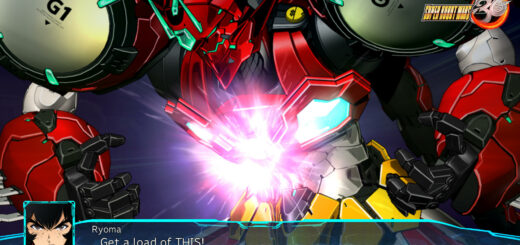The Legend of Zelda: Tears of the Kingdom Review
As Above, So Below
Although also released on Wii U, The Legend of Zelda: Breath of the Wild was a huge success as an early system seller for the Nintendo Switch. Nevertheless, Nintendo has been patient in following it up, taking six years to release The Legend of Zelda: Tears of the Kingdom. That time has been well spent, as its developer team built magnificently upon its predecessor’s systems and introduced new ideas that offer players a staggering amount of creativity and puzzle-solving freedom.
While Tears of the Kingdom is a sequel to Breath of the Wild, players can leap in here without any knowledge of prior events. There are appreciable call-backs and references newcomers might not fully get, but they provide enough information to broadly fill in any necessary gaps. The game’s story is fully contained and begins wiglth Link and Zelda exploring caves beneath Hyrule, investigating the source of an unknown substance that is afflicting the populace. The pair encounter ruins and bear witness to the reawakening of Ganondorf, who shatters the Master Sword and corrupts Link’s arm while Zelda disappears with a strange artifact.
Fortunately, Link is rescued by the lingering powers of a Zonai — precursors to the current kingdom of Hyrule — named Rauru, whose arm replaces Link’s lost one. Waking up in the sky islands above Hyrule, Link learns some of the new Zonai powers his new arm grants him access to. Upon returning to Hyrule below, Link learns that Ganondorf’s awakening has caused chaos throughout the kingdom, with these events collectively referred to as the Upheaval, and sets out on a new quest to find Zelda and investigate a variety of regional disturbances potentially connected to Ganondorf and Zelda.
Though The Legend of Zelda is known more for its focus on exploration and puzzle-solving aspects than its narrative, Tears of the Kingdom does a good job using its story to provide solid impetus for that exploration and its main questline. The story is never particularly deep and Ganondorf is a pretty one-note, obviously evil antagonist, though it still incorporates some interesting time-based elements with looks back into Hyrule’s past. Tears of the Kingdom effectively uses its story to provide some strong emotional moments — particularly in its finale — and the general writing throughout provides lots of enjoyable moments.
Tears of the Kingdom’s version of Hyrule is a delight to explore. Hyrule itself is already packed full of things to do, but adding both the Sky Islands above and the Depths below gives players two new extra levels of interaction, with gliding around the Hyrulian skies providing a key method of traversing both the Sky Islands and the mainland, treating players to stunning views throughout. Meanwhile, the Depths add subterranean exploration, with players needing to find ways to light their way as well as being restricted in how they can heal due to the Gloom found there, which means damage taken cannot be restored as normal.
Hyrule has a solid variety of locations, from freezing mountains to scorching deserts, and the game brings these to life through its fantastic location design and supporting systems such as weather and temperature, which players will need to take into account. It’s very unwise to go wandering in a thunderstorm armed with a metal weapon or shield, and players will want to ensure they have warm clothing when braving the icy peaks. In among all of these locations are a great variety of quests that mean players will always have something they can aim for or can try and progress, as well as numerous discoverable challenges, such as a recurring character struggling to put up signs across Hyrule. Players will also find numerous ingredients that can be used in a fairly extensive cooking system, which provides the game’s primary healing, buffs, and resistance options.

The Legend of Zelda: Tears of the Kingdom is a textbook example of visual design trumping pure fidelity.
The Legend of Zelda: Tears of the Kingdom also stands out with its approach to puzzle-solving and the freedom it gifts players. While all of the puzzles have a definite solution, the tools provided frequently allow for multiple possible ways of achieving a goal. The game is more than happy to let players bypass something with a trick of their own, and it encourages players to think for themselves rather than search for a specific solution that has been laid out. Without spoiling the surprises, there are tons of little tricks and touches that players can discover to help craft a solution to a problem or that can point them towards places of interest.
Scattered around the mainland and the Sky Islands are Shrines. In addition to acting as the game’s fast-travel points, these add their own self-contained mini-dungeons providing tutorials and trials that work as great teaching opportunities to players, giving them specific challenges and puzzles and showing them how different tools can be used in novel ways. Finding Shrines is always rewarding: completing four of them awards a health or stamina bonus, and their puzzles ensure that players are given plenty of ideas of how they can approach different problems. Players’ puzzle-solving capabilities are best put to the test by Temples, the game’s primary dungeons. However, it’s not just the Temples themselves that provide strong memories; the journeys to them are filled with excellent sequences that will have players thinking and overcoming challenges.
The new Zonai devices and abilities add a huge amount to Link’s arsenal, with the devices allowing players to build anything from the simple, such as a controllable hot air balloon or powered buggy, to the outlandish. These creations are restricted on how long they can run by their power consumption, but players can increase their available power supply, primarily through exploration of the Depths. What’s impressive is how the game balances all of its content; it will readily give players everything they need to get through the main story, but there’s a huge amount of extra optional content of a wide variety of different flavours, and Tears of the Kingdom makes it apparent that players can engage with these extras as much or as little as they want. Although the main questline can be completed much more quickly, the many who do get sucked fully into exploring what Hyrule and the lands above and below have to offer will readily find their game time zooming past the hundred-hour mark.

Addison (aka the Sign Guy) provides ample opportunity for creating either simple or excessively complicated solutions.
The rest of the game is so interesting that the combat almost takes a back seat, but it, too, has all of the tools it needs to successfully support those other elements and remain engaging throughout. Breath of the Wild’s equipment degradation returns, but far from being annoying, it works well at ensuring players remain flexible in combat and are ready to mix things up rather than relying on something that works. Base weapons, from sticks to swords and spears, are readily available, but truly shine when fused with other items; the most effective damage-wise are usually monster parts, but things like gems can generate incredibly helpful effects both in and out of combat.
Combat is largely the same as many of the previous 3D Zelda titles, with some unique bells and whistles. It has the familiar mixture of being able to lock onto an opponent; dodge, block, or parry attacks; and the use of arrows. Like weapons, both arrows and shields can also be fused with other items to create fun tools and effects. Many attacks will hit hard, but players who are able to master the timing and tells to successfully dodge or parry at the right moment are greatly rewarded with the chance to rush the opponent and do major damage. The game has a nice selection of bosses and powerful foes with their own tricks and weaknesses to find and exploit; however, the base monsters can get a little tiresome, particularly towards the latter parts of the game when certain monsters get more powerful variants that become more of a chore to deal with than anything else.
During the game, Link will obtain support from allies who join him in spiritual forms and can be used to unleash a special move, while also effectively acting as AI party members in combat. It can be a bit annoying trying to use a specific ally’s ability once multiple have been obtained, though the moves are only really vital around their individual temples. Useful pause menus let Link switch his current equipment and prepare or use items at any time. It can take a little while to train oneself to the specific buttons, and it’s still easy to press the wrong thing in the moment, but doing so is rarely disastrous as players get the time to rethink and realise what they wanted to do.
Although as a character there isn’t too much to him, Matthew Mercer’s Ganondorf is the highlight of the otherwise quite variable English voice acting. The voice acting only comes in for major cutscenes, but quite often it just doesn’t feel like it quite fits with what’s happening on screen, and Link is kept as a silent protagonist, which feels like the appropriate decision. Otherwise, the sound design is excellent. The music provides a great backing, welling up at all the appropriate moments, and there are a multitude of impressive touches and sound effects that really add to the experience and make everything incredibly satisfying.
The Legend of Zelda: Tears of the Kingdom’s visuals are simply magnificent. The cel-shaded style is an excellent example of how the game’s design and its visual execution are able to offer more than pure model and world fidelity. Many of the game’s visual effects add a ton to the experience, particularly its lighting effects, as the haze and light flare that accompany the sunrise. There are times when the frame rate drops a little, but the game is so pleasing to behold that these drops barely register. The animations are great, and excellent views can be found across the world.
The Legend of Zelda: Tears of the Kingdom has immediately become one of the Switch’s standout titles. Creating something with a greater draw than the Breath of the Wild was always going to be a challenge, but Nintendo has taken lessons learned from and systems established in it to create a glorious follow-up that fully deserves the plaudits that have already come its way. Even for those who haven’t played many Zelda titles, Tears of the Kingdom is absolutely worth diving into and rewards every moment spent with it.


Player toolset offers huge creativity
Magnificent visual design
Tons to do and see
Variable voice acting
Some late-game mobs are annoying








Recent Comments